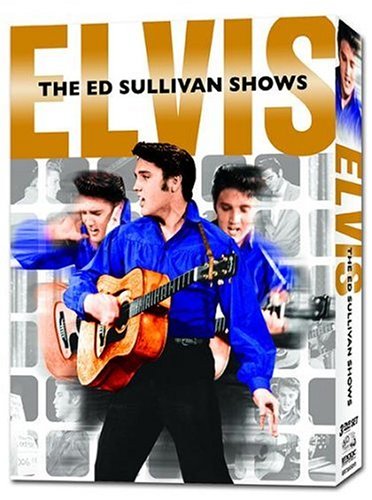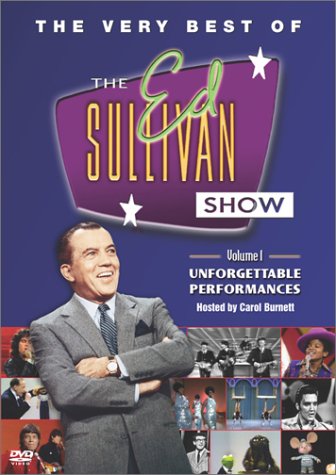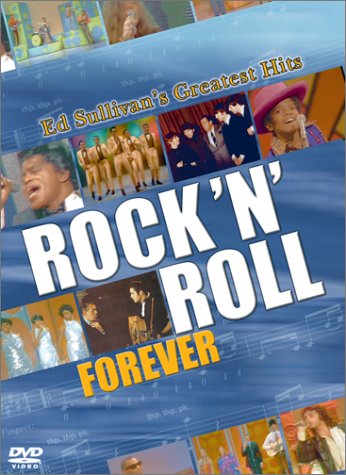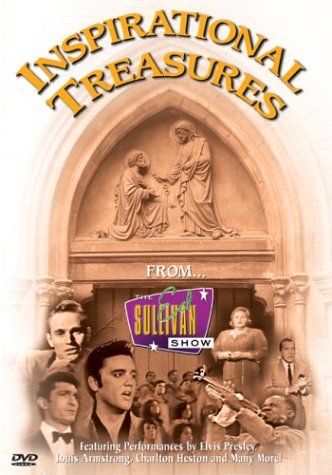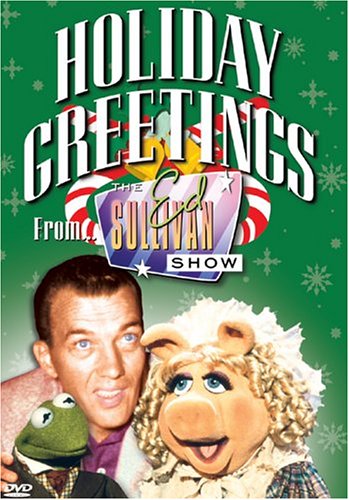Already owning a Number One hit with “Heartbreak Hotel,” Elvis had been on television before, but nothing compared to his debut on The Ed Sullivan Show when 60 million viewers tuned in. It was a high profile cultural moment and national event when 82% of the television viewing audience watched Elvis on The Ed Sullivan Show.
This young man, whose sound and raw, energetic performances went against everything the conservative Eisenhower era stood for, captivated the youth of America. That night on the Sullivan show, Elvis entered living rooms across the country and created a cultural revolution that changed musical tastes and entertainment forever.
An average student, Elvis found inspiration at The First Assembly of God, the church his family attended, and where he learned to love gospel music. On his eleventh birthday, Elvis was given a guitar by his mother and, inspired by southern gospel singers like Jake Hess and country artists like Hank Snow and Roy Acuff, he taught himself to sing and play the instrument by ear. As he grew older Elvis became more passionate about music and immersed himself in the sounds of his new home — Memphis, Tennessee.
By 1955, at the age of 20, Elvis Presley was emerging as a regional star in the south, touring and playing shows from Tennessee to Texas. Known for his lively performances and on stage gyrations, Elvis played a unique blend of R&B, country, gospel and rock ‘n’ roll. At this early age, Elvis was taken under the wing of well-known music promoter Colonel Tom Parker who heard about Elvis and the audience reaction he was getting whenever he performed. Elvis was recording for producers Sam Phillips and his Sun label. Parker got RCA to buy Elvis’ contract for an outrageous sum at the time — $35,000. Elvis’ first single, “Heartbreak Hotel” was released on January 27, 1956 and his self-titled debut album two months later. “Heartbreak Hotel” became Elvis Presley’s first Number One single and his debut album quickly went gold.
To give his artist a national showcase Colonel Parker booked Elvis’s first televised appearance on Tommy and Jimmy Dorsey’s Stage Show. To get him on the show, The Colonel sent the show’s producer, Jackie Gleason, a glossy photo of Elvis with a note reading “JG: This is Elvis Presley. About to be Real Big…- Colonel.” The deal was for six appearances, and although Stage Show was not a major variety show it brought Elvis his first national exposure.
Soon after, Elvis’s national popularity was on the rise, and Hollywood wanted in. Elvis signed a movie contract with Hal Wallis and Paramount Pictures. The Colonel next booked two appearances for him on The Milton Berle Show. For the first show broadcast, April 3, 1956, Elvis was filmed on the flight deck of the USS Hancock in San Diego. Hundreds of sailors were in attendance. In the second show, June 5, 1956, Elvis’s playful performance of “Hound Dog” drove the teens wild, but the press and some adults were outraged. The controversy over his bumps and grinds and gyrating hips only served to fuel the fire. When Ed Sullivan was asked if he would book Elvis on his show, he said he would not. He didn’t want to be the recipient of scathing criticism from the nation’s media.
Then on July 1st, 1956, Elvis appeared on NBC’s new Steve Allen Show, which aired opposite CBS’s The Ed Sullivan Show. Due to the backlash from Presley’s second and last performance on The Milton Berle Show, Allen decided to dress Elvis in a tuxedo and have him sing “Hound Dog” to a basset hound. While many of Elvis’s teenaged fans may not have appreciated the comedic intent of the song (Elvis personally hated it), The Steve Allen Show crushed Ed Sullivan in that week’s ratings. On Monday, Ed Sullivan sent Steve Allen a telegram reading: “Steven Presley Allen, NBC TV, New York City. Stinker. Love and kisses. Ed Sullivan.”
By Monday morning Ed Sullivan caved and decided to book Elvis on his Sunday night showcase. Sullivan and Colonel Parker agreed to have Elvis appear three times for the then mind boggling sum of $50,000, the highest amount ever paid to a performer to appear on TV. Ironically, before Elvis had appeared nationally on television, Sullivan had turned down the opportunity to book Elvis on his show for $5,000. He passed on the opportunity, because he wasn’t sure that Presley would be a good fit for his show’s family audience. But after getting trounced in the ratings by Steve Allen, Ed had to concede and he paid dearly. It would be a show business marriage made in ratings heaven.
A month before Elvis’s Sullivan debut, Ed was involved in nearly fatal automobile accident that left him hospitalized for weeks. By the time September 9th, 1956 rolled around, Ed was still recovering from his injuries and was unable to host Presley’s historic appearance. British actor Charles Laughton hosted the show from Ed’s New York studio and introduced Elvis to the television audience. “…and now, away to Hollywood to meet Elvis Presley!” 60 million viewers were transported to CBS Television City in Los Angeles for Elvis Presley’s performance of “Don’t Be Cruel” and “Love Me Tender,” the latter being the title song of his first Hollywood feature film.
Later, it was again back to Hollywood where Elvis returned to perform Little Richard’s hit, “Ready Teddy” after which he thanked “Mr. Sullivan” for the opportunity and wished him a speedy recovery. Continuing his serious tone, Elvis then introduced his next number, “As a great philosopher once said…’You ain’t nothin’ but a hound dog!’” Elvis held nothing back, snarling and gyrating and stirring up controversy all over again. Contrary to what many believe about CBS insisting that cameras only shoot Elvis from the hips up, the TV audience had a full view of Elvis Presley that evening.
By the time of his next appearance on The Ed Sullivan Show, October 28th, 1956, Sullivan had recovered from his injuries and resumed his duties hosting the show. Following an innocent act by an Irish children’s choir called The Little Gaelic Singers, Elvis Presley took the stage and sang, “Don’t Be Cruel” and “Love Me Tender.” After Señor Wences’s ventriloquism act, Elvis returned to perform “Love Me.” During this song the camera moved in for a close-up of Elvis’ face, and then, as if on cue, he smiled and snarled his upper lip. The studio audience went wild. Elvis closed with another performance of his hit, “Hound Dog.” Again viewers were shown a head-to-toe Elvis.
Following the broadcast, which again enjoyed huge ratings, Elvis was burned in effigy by angry crowds in Nashville and St. Louis. The popular press was also critical of his style and movements. Rock and roll was increasingly attacked and there was growing opposition to its supposedly negative influence on America’s youth. The more the establishment pushed back, the more Elvis’s support grew from millions of teenagers.
Elvis’s third and final appearance on The Ed Sullivan Show took place on January 6th, 1957. He shared the stage with Sullivan impressionist Will Jordan, ventriloquist Arthur Worsley and a rising comedienne, Carol Burnett.
Elvis’s sexy gyrations had stirred up enough controversy across America that CBS censors demanded he be shot only from the waist up only!
Elvis performed a number of songs that night including “Hound Dog,” “Love Me Tender”, “Heartbreak Hotel”, “Don’t Be Cruel,” “Too Much,” “When My Blue Moon Turns To Gold Again,” and a gospel favorite, “Peace in the Valley.” At the end of the show Ed Sullivan went out of his way to compliment Presley, “I wanted to say to Elvis Presley and the country that this is a real decent, fine boy, and wherever you go, Elvis, we want to say we’ve never had a pleasanter experience on our show with a big name than we’ve had with you. So now let’s have a tremendous hand for a very nice person!” With that endorsement, Elvis Presley bowed, was clearly appreciative and exited the Sullivan stage for the last time. He went on to become one of the most famous and beloved artists in the history of entertainment.
In 2006, The History Channel selected the September 9th, 1956 Elvis Presley appearance on The Ed Sullivan Show as one of the “10 Days That Unexpectedly Changed America.” Elvis Presley on The Ed Sullivan Show was a key stepping stone on The King’s path to worldwide fame. Today Presley remains a cultural icon and a global legend, the best selling solo artist in the history of popular music, and perhaps thanks in part to Elvis’ three historic appearances on The Ed Sullivan Show.
Check out our Elvis Presley playlist to see full performances from The Ed Sullivan Show!


